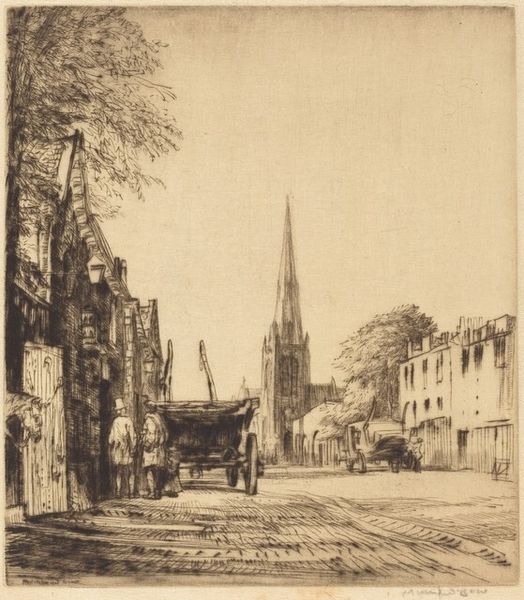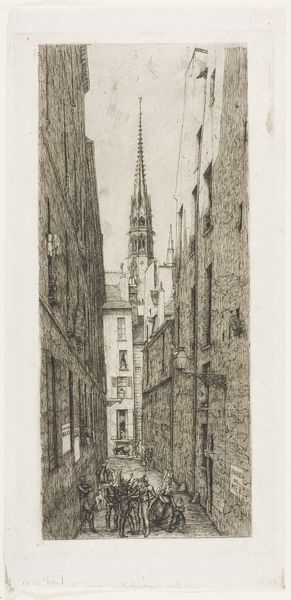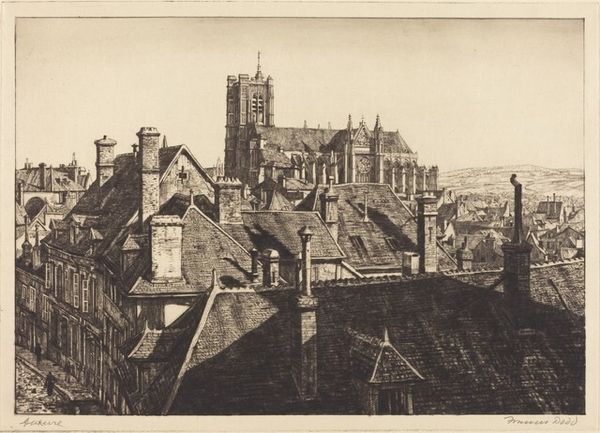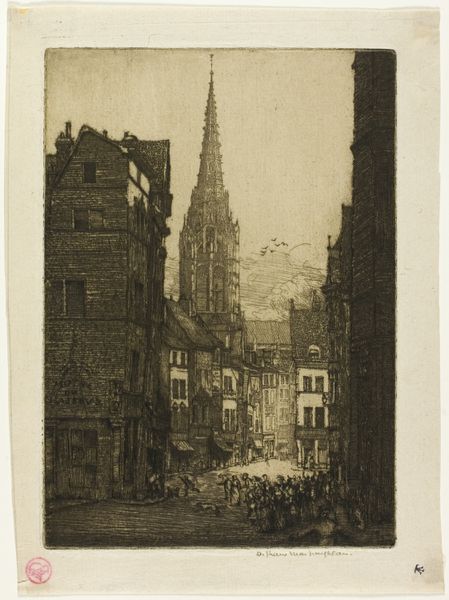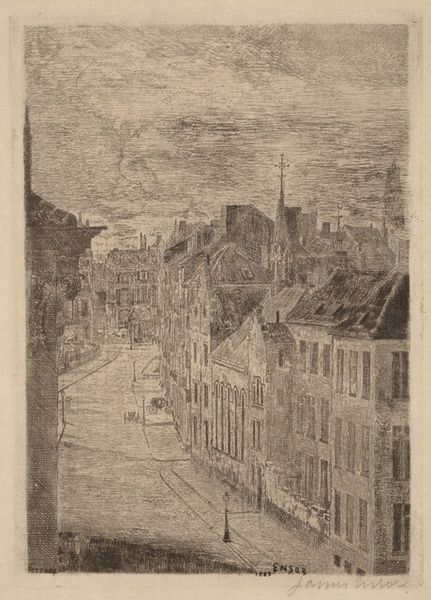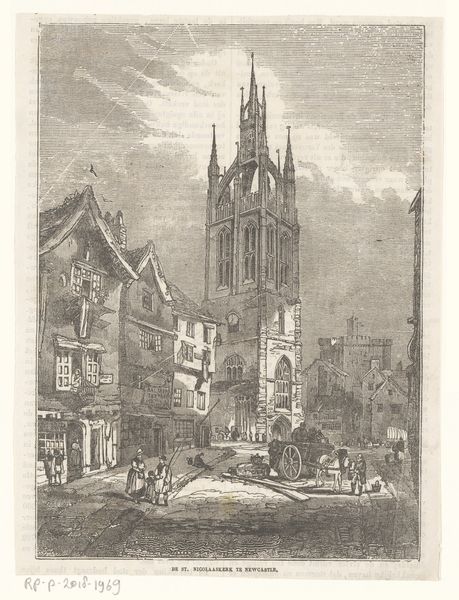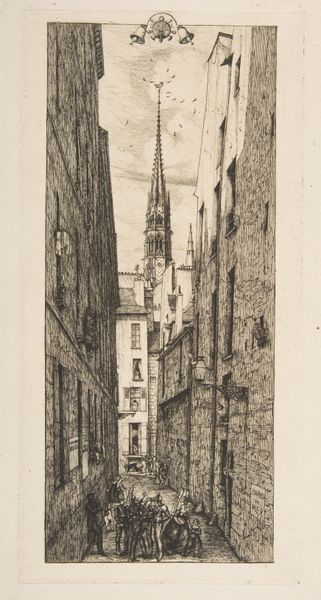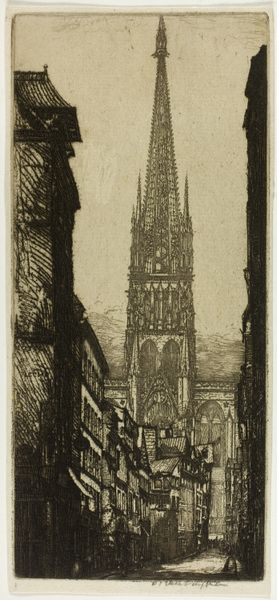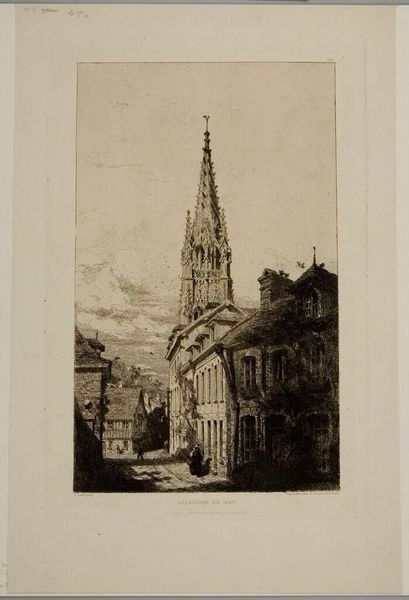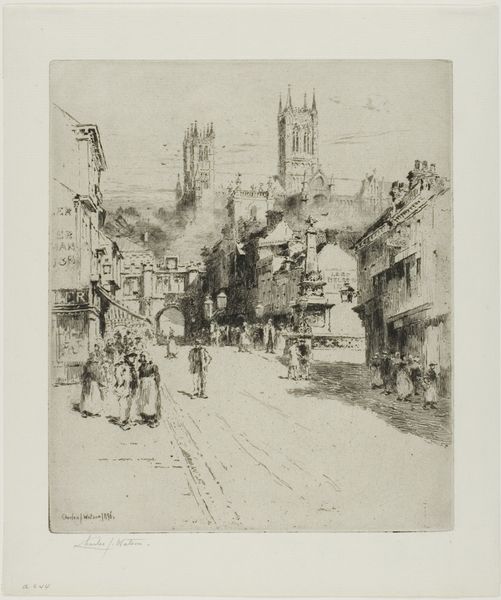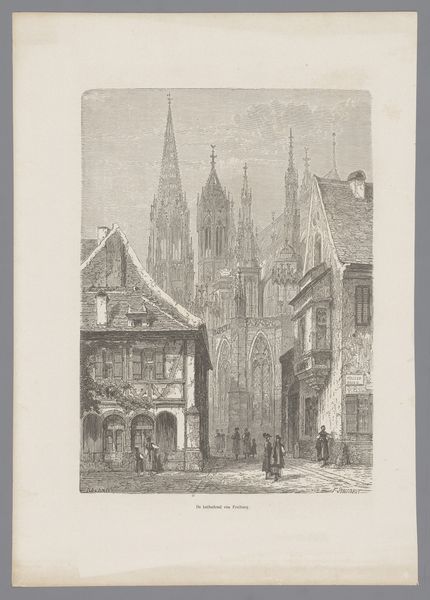
print, etching
art-nouveau
etching
landscape
british
cityscape
realism
Copyright: National Gallery of Art: CC0 1.0
Curator: Muirhead Bone’s etching, The Jews' Quarter, Leeds, dating from around 1908 to 1921, offers a fascinating snapshot of urban life. Editor: It’s… surprisingly delicate, isn’t it? Considering it depicts such a dense, urban scene. The crosshatching gives the image an almost hazy atmosphere. Curator: Bone was particularly interested in capturing the spirit of place, often focusing on scenes of industry, or in this case, community, within the rapidly changing cityscape of the early 20th century. He became an official war artist during both world wars. Editor: War imagery doesn't immediately jump to mind, but looking closer you notice the weight of the buildings, the relentless chimneys—it conveys the scale of production, labor of working-class living. The choice of etching is interesting too, the process itself involves laboring over the metal plate. Curator: The composition leads our eye through the narrow street toward the imposing church towering above. It subtly prompts reflection on the position of religion within that specific societal context, suggesting its prevalence but also its distance from those who live at street level. Editor: The figures are equally compelling; they seem to melt into the environment—the street's lifeblood. I'm drawn to how Bone employs lines, almost as though the individuals and the brickwork are products of a similar method of construction and a social strata. Curator: And, the name “The Jews’ Quarter,” brings the social element front and center. He offers a window into the everyday realities of an immigrant community adapting to industrial England. His selection of etching makes accessible and consumable these lives in an industrial period. Editor: True. It also opens up an area for critical discussion, and that is whether Muirhead, within his selection of process and subject, reinforces stereotypes. Yet, at the very least, it provides a platform to consider the circumstances of those who have contributed significantly to the nation's fabric. Curator: A nuanced perspective, highlighting how art acts as both a historical record and an invitation for dialogue, which I believe, in this piece, he delivers so very well. Editor: Indeed; an intricate print to admire, but more importantly, it causes us to question and reflect on a shared industrial past.
Comments
No comments
Be the first to comment and join the conversation on the ultimate creative platform.
